According to Buglife, wild pollinators include bumblebees and other bees (250 species), butterflies and moths (2200 species), flies (6700) and various other insects such as beetles, wasps and thrips. Many plants rely on these insects to pollinate their flowers and complete their reproductive cycle as most plants cannot set seed without being pollinated.
Learn how to identify common pollinating species found in your garden in our wildlife gardening expert guide by gardening expert Dave Goulson.
Garden bumblebee (Bombus hortorum)
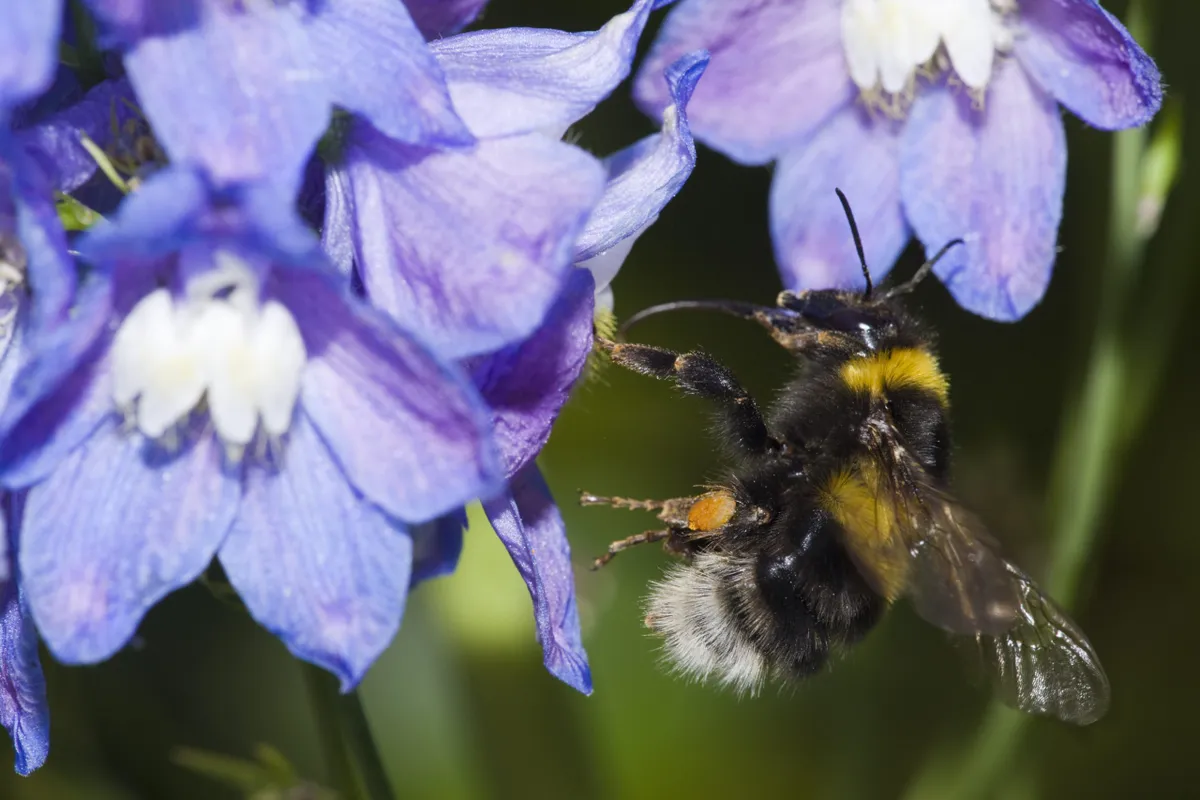
One of several bumblebee species with yellow stripes and a white tail, the garden bumblebee is most easily distinguished by its elongated, almost horse-shaped head, and very long tongue which they use to extract nectar hidden in the depths of tubular flowers. As a result, they tend to visit quite different flowers to most other bumblebees. The queens love white dead-nettle in early spring, while workers visit foxgloves, honeysuckle, red clover and snapdragon. Garden bumblebees are found in gardens throughout the UK, although they are rarely abundant. They emerge from hibernation in April and build nests on or just above the ground, often using old rodent nests in dense vegetation.
Tree bumble (Bombus hypnorum)
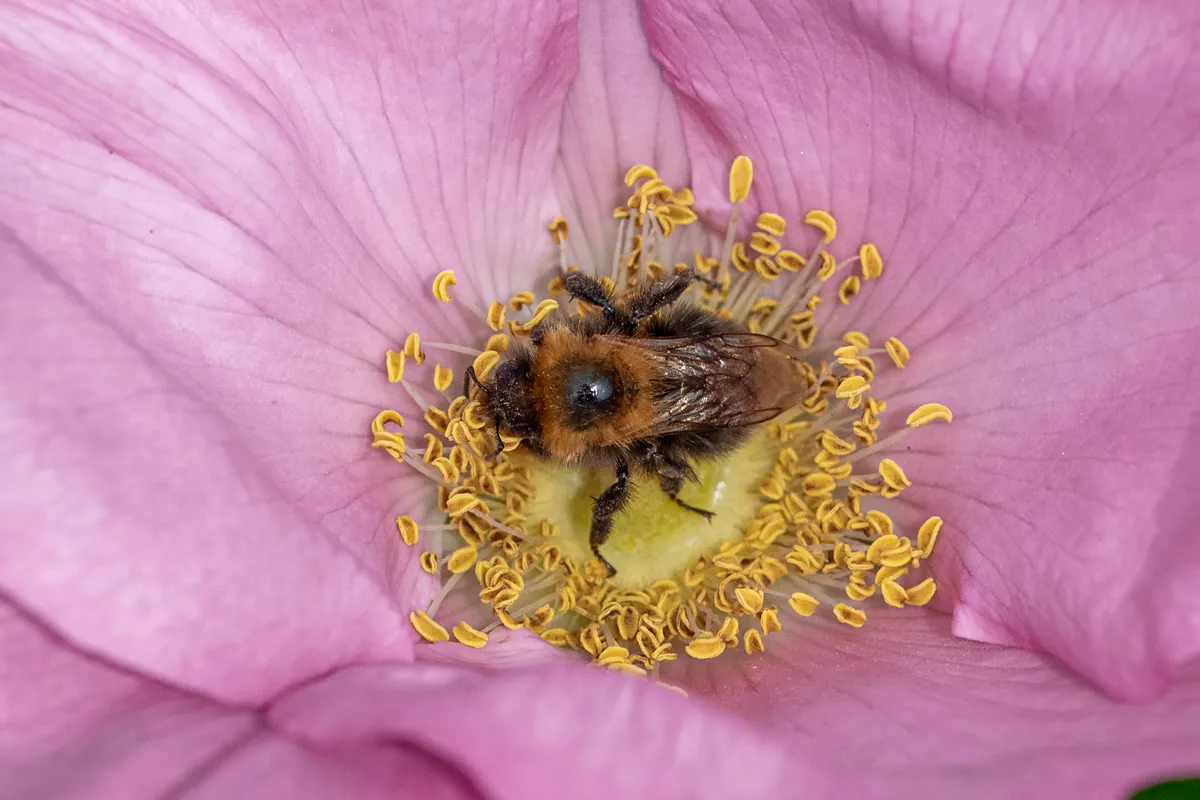
A pretty and easy-to-identify bumblebee, with a distinctive pattern of brown thorax, black abdomen and white tail. Tree bumblebees coloniaed the south of the UK in 2001 and have since become common in gardens. They are unusual for bumblebees in that they natural nest above ground in holes in trees, and happily occupy blue tit boxes. They have even been known to oust birds from their nests. They like shallow flowers such as geraniums and Cotoneaster.
Leafcutter bee (Megachile willughbiella)

Leafcutters are common occupants of bee hotels. They carefully snip semi-circles of leaves, often using rose and lilac leaves, which they carry back to their nest and stick together with silk to line their nest before stocking it with pollen and laying their eggs. Leafcutter bees like daisy-family plants, particularly thistles, and they carry the pollen on their hairy tummies.
Ivy bee (Colletes hederae)
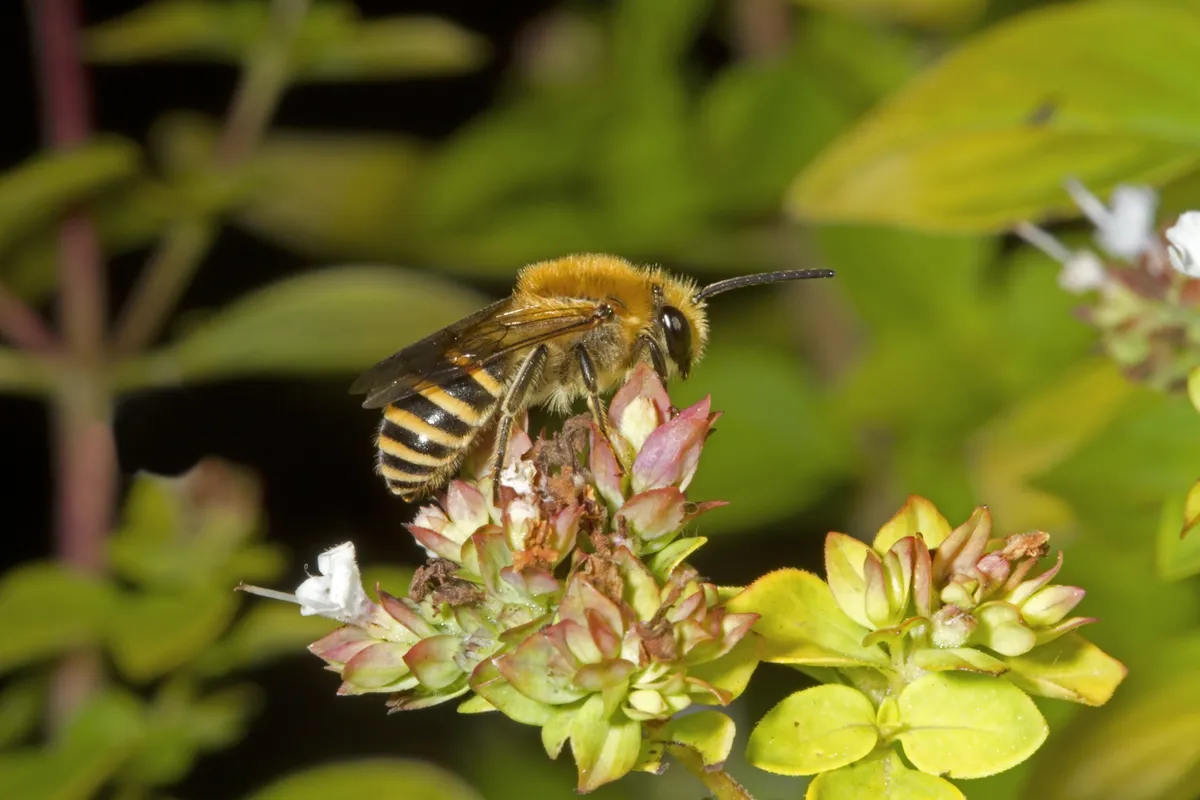
The last solitary bee of the year to emerge, in September, is the ivy bee. They are roughly the size of a honeybee, but with prominent yellow stripes. It has a very strong preference for ivy flowers, as the name suggests. Although they are solitary bees, they often nest in aggregations in lawns and flower beds, burrowing into the soil and leaving little spoil-heaps next to the holes. These can be somewhat intimidating if the aggregations are large, but the sting is weak and they are not at all aggressive.
Tiger hoverfly (Helophilus pendulus)

These handsome insects are sometimes also known as “the footballer” because their longitudinal yellow and black stripes are reminiscent of a football jersey. The adults are often seen on flowers, but the larvae are aquatic and are often found in hoverfly lagoons (small aquatic habitats containing rotting leaves). The larvae have a long tail, a snorkel that they use to breath, which gives them their unfortunate name: ‘rat-tailed maggots’.
Please note that external videos may contain ads:
Rose chafer (Cetonia aurata)
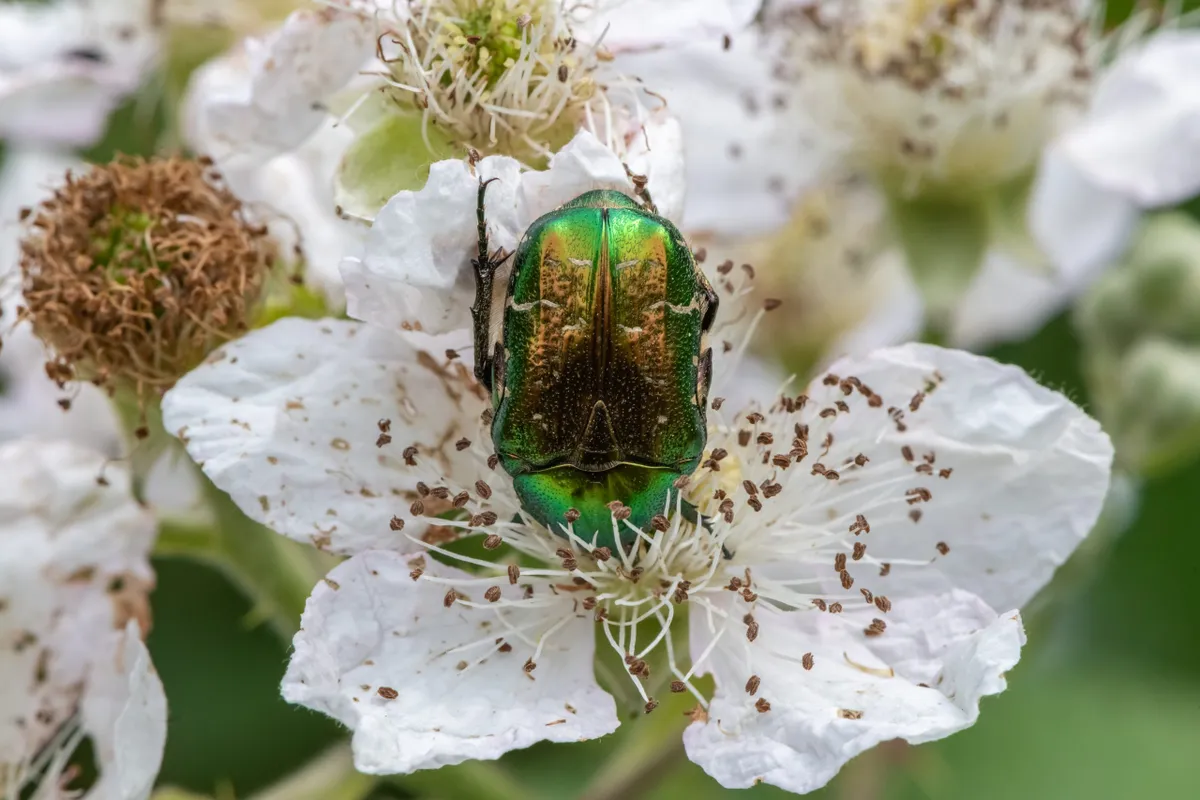
Rose chafers are jewel-like, large and stocky metallic-green beetles streaked with white. This is not a common species in the UK but turns up regularly in gardens in scattered sites across England and South Wales. The adult beetles love the pollen of roses, brambles and hogweed, and are on the wing in late spring and summer. Their flight is distinctively clumsy and noisy. The fat white grubs live in rotting tree stumps, compost and leaf mould, eating the slowly decaying organic matter. Unusually for an insect, the life cycle often takes two years to complete.
Soldier beetle (Rhagonycha fulva)
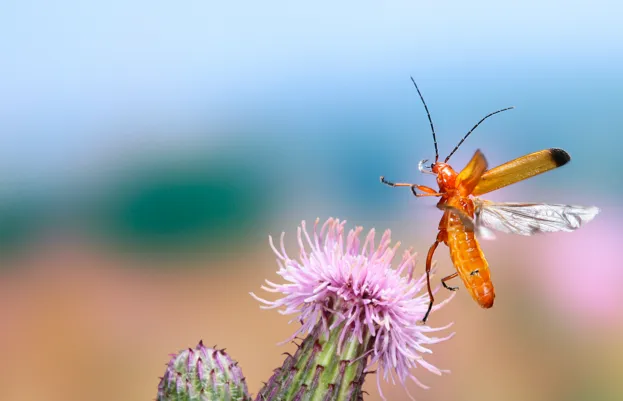
Soldier beetles are easily recognised, elongate rust-coloured beetles with black tips to their wing cases. They are generally by far the most common beetles visiting flowers in my garden. They are on the wing from late spring to early autumn and spend much of their summer locked together in mating pairs, while simultaneously grazing on the pollen of umbellifers and daisy-family plants. They particularly like lovage, cow parsley, hogweed and creeping thistle. In addition to feeding on flowers, soldier beetles prey on small insects such as aphids, and provide valuable pest control in the vegetable patch.
Small tortoiseshell butterfly (Aglais urticae)
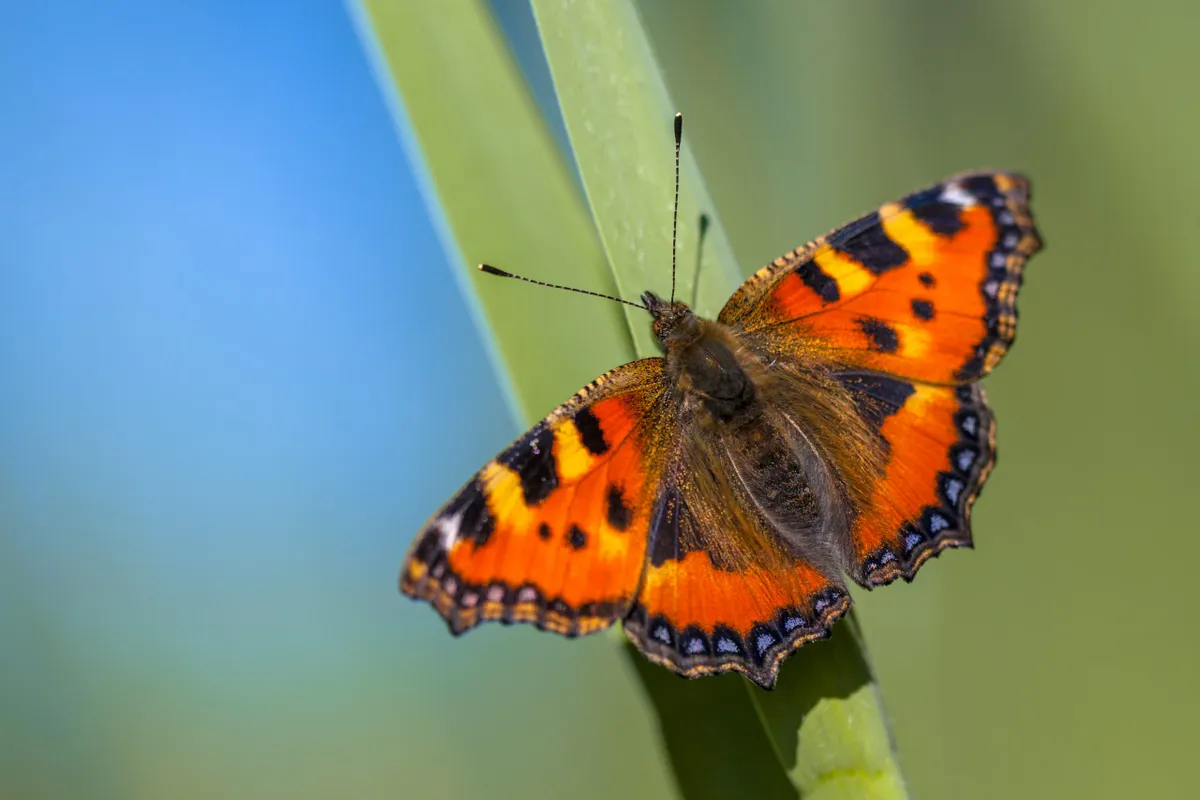
When I was young, these were the most common butterflies on the garden buddleia, but they are now much less abundant, although still widespread. Small tortoiseshells have two generations per year and hibernate as adults, so providing nectar-rich flowers like ice plants in late summer helps keep them going through their long sleep.
Like those of their relative the peacock, the caterpillars of the small tortoiseshell live among webbing on patches of nettles. Both species lay eggs on young nettle growth, so if you have a large patch of nettles try cutting some of it back hard in early June. This will provide a flush of new growth by the end of the month, which is roughly when the summer brood are looking to lay.
Holly blue butterfly (Celastrina argiolus)
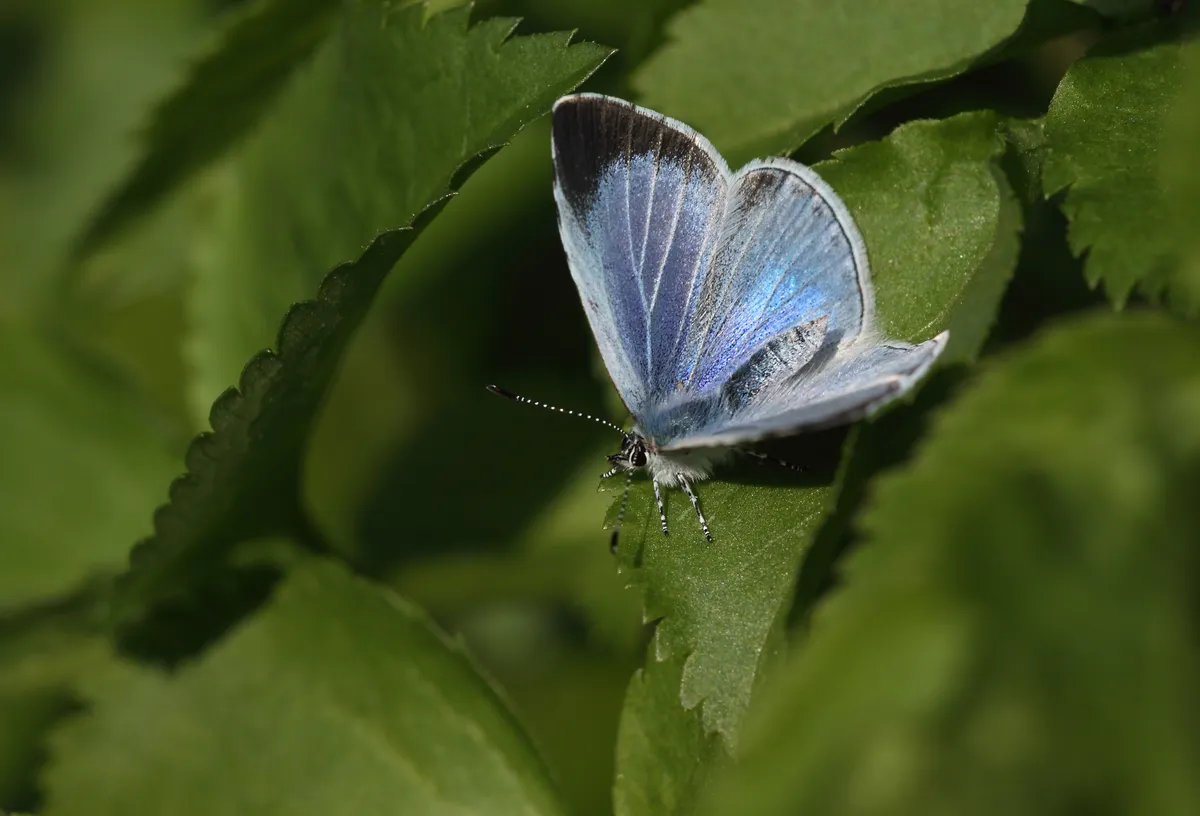
It is by far the earliest blue butterfly on the wing each year, so if you saw a smallish blue butterfly in April or early May, it was certainly this species. These spring adults lay their eggs on holly, with the caterpillars eating the buds, berries and leaves, and a second generation of adults appears in August, which lay their eggs on the buds of ivy flowers.
Holly blues are still fairly common in gardens, parks and churchyards throughout the southern half of Britain. You can encourage the butterfly simply by allowing ivy to grow and flower and avoiding pruning outside the winter months if it must be done at all. If you are really keen, plant a holly tree too.
Cinnabar moth (Tyria jacobaeae)
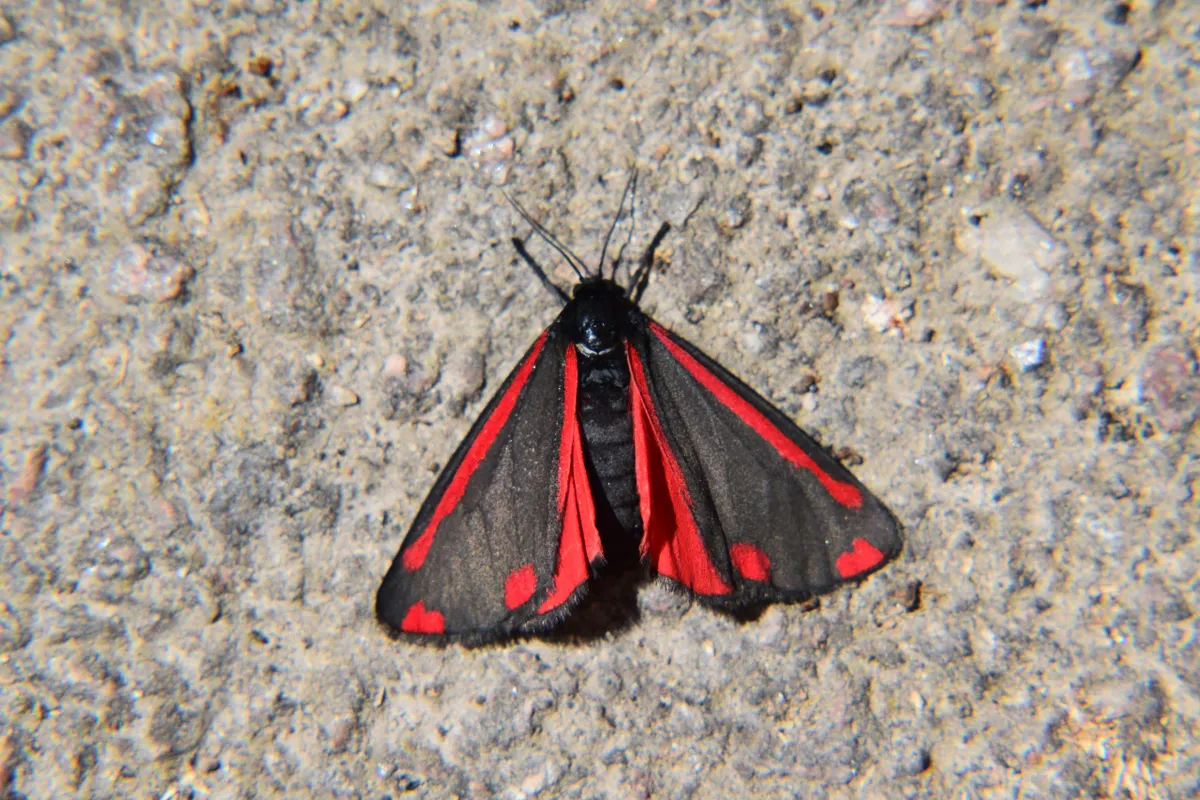
These unmistakeable scarlet and black moths are commonly found anywhere where the foodplant ragwort grows. The adult moths sit about on flowers, often nectaring on ragwort, and flutter away rather feebly when disturbed. They are on the wing from May to August.
Ragwort is a weedy plant often regarded as a pest as it is poisonous to livestock if large amounts get into hay, but it is a great plant for pollinators. Inspection of ragwort plants from June onwards will usually reveal the yellow-and-black-striped caterpillars, initially feeding in groups but then splitting up and living alone as they get bigger.
Main image: Bumblebee on lavender. © Getty
